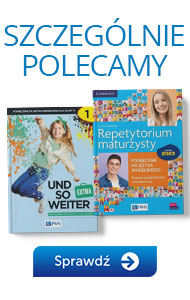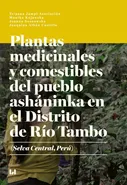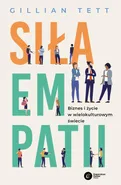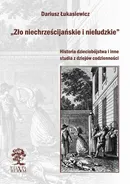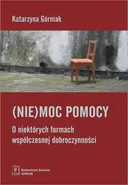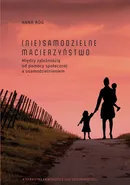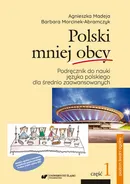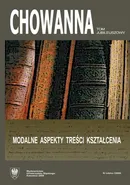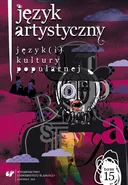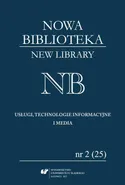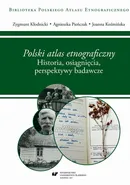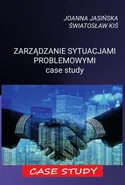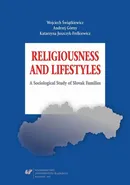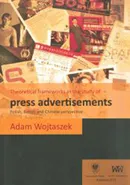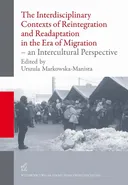The Anatomy of Intercultural Encounters. A Sociolinguistic Cross-Cultural Study
Żyjemy w czasach, w których kontakt z obcokrajowcami (osobisty lub wirtualny) jest nieunikniony. Publikacja koncentruje się na charakterystyce spotkań międzykulturowych, interakcji jakie zachodzą pomiędzy uczestnikami takich spotkań oraz przedstawieniu czynników, które odgrywają istotną rolę podczas komunikacji międzykulturowej. Spotkania międzykulturowe omówione są z dwóch perspektyw: teoretycznej i osobistej, uwzględniającej doświadczenia studentów Filologii Angielskiej polskiego i tureckiego pochodzenia. Publikacja z jednej strony przybliża specyfikę kontaktów międzykulturowych i pozwala zaobserwować mechanizmy, jakie podczas takich spotkań występują; z drugiej zaś stanowi materiał źródłowy w postaci osobistych refleksji uczestników badania, historyjek i anegdotek z zakresu komunikacji międzykulturowej. Dlatego też, książka adresowana jest do zarówno do studentów, osób podróżujących i mających kontakt z obcokrajowcami, jak i nauczycieli lub osób prowadzących szkolenia międzykulturowe.
- Kategorie:
- Język wydania: angielski
- ISBN: 978-83-226-3017-4
- Liczba stron: 250
-
Sposób dostarczenia produktu elektronicznegoProdukty elektroniczne takie jak Ebooki czy Audiobooki są udostępniane online po opłaceniu zamówienia kartą lub przelewem na stronie Twoje konto > Biblioteka.Pliki można pobrać zazwyczaj w ciągu kilku-kilkunastu minut po uzyskaniu poprawnej autoryzacji płatności, choć w przypadku niektórych publikacji elektronicznych czas oczekiwania może być nieco dłuższy.Sprzedaż terytorialna towarów elektronicznych jest regulowana wyłącznie ograniczeniami terytorialnymi licencji konkretnych produktów.
-
Ważne informacje techniczneMinimalne wymagania sprzętowe:procesor: architektura x86 1GHz lub odpowiedniki w pozostałych architekturachPamięć operacyjna: 512MBMonitor i karta graficzna: zgodny ze standardem XGA, minimalna rozdzielczość 1024x768 16bitDysk twardy: dowolny obsługujący system operacyjny z minimalnie 100MB wolnego miejscaMysz lub inny manipulator + klawiaturaKarta sieciowa/modem: umożliwiająca dostęp do sieci Internet z prędkością 512kb/sMinimalne wymagania oprogramowania:System Operacyjny: System MS Windows 95 i wyżej, Linux z X.ORG, MacOS 9 lub wyżej, najnowsze systemy mobilne: Android, iPhone, SymbianOS, Windows MobilePrzeglądarka internetowa: Internet Explorer 7 lub wyżej, Opera 9 i wyżej, FireFox 2 i wyżej, Chrome 1.0 i wyżej, Safari 5Przeglądarka z obsługą ciasteczek i włączoną obsługą JavaScriptZalecany plugin Flash Player w wersji 10.0 lub wyżej.Informacja o formatach plików:
- PDF - format polecany do czytania na laptopach oraz komputerach stacjonarnych.
- EPUB - format pliku, który umożliwia czytanie książek elektronicznych na urządzeniach z mniejszymi ekranami (np. e-czytnik lub smartfon), dając możliwość dopasowania tekstu do wielkości urządzenia i preferencji użytkownika.
- MOBI - format zapisu firmy Mobipocket, który można pobrać na dowolne urządzenie elektroniczne (np.e-czytnik Kindle) z zainstalowanym programem (np. MobiPocket Reader) pozwalającym czytać pliki MOBI.
- Audiobooki w formacie MP3 - format pliku, przeznaczony do odsłuchu nagrań audio.
Rodzaje zabezpieczeń plików:- Watermark - (znak wodny) to zaszyfrowana informacja o użytkowniku, który zakupił produkt. Dzięki temu łatwo jest zidentyfikować użytkownika, który rozpowszechnił produkt w sposób niezgodny z prawem. Ten rodzaj zabezpieczenia jest zdecydowanie bardziej przyjazny dla użytkownika, ponieważ aby otworzyć książkę zabezpieczoną Watermarkiem nie jest potrzebne konto Adobe ID oraz autoryzacja urządzenia.
- Brak zabezpieczenia - część oferowanych w naszym sklepie plików nie posiada zabezpieczeń. Zazwyczaj tego typu pliki można pobierać ograniczoną ilość razy, określaną przez dostawcę publikacji elektronicznych. W przypadku zbyt dużej ilości pobrań plików na stronie WWW pojawia się stosowny komunikat.
Contents Acknowledgments / 9 Introduction / 11 Chapter 1: Intercultural encounters / 17 1.1 Intercultural encounters – Facts / 17 1.2 Intercultural encounters as awareness-raising situations / 21 1.3 Intercultural encounters as interaction, mediation, and negotiation / 22 1.3.1 Intercultural encounters as mediation / 25 1.3.2 Intercultural encounters as negotiation / 26 1.4 Intercultural encounters – The linguistic dimension / 27 1.4.1 Intercultural encounters as language-in-action situations / 28 1.4.2 Intercultural encounters as culture bumps – Cross-cultural pragmatics / 30 1.5 Intercultural encounters as problem-solving tasks / 33 1.6 Intercultural encounters as emotion-generation situations / 34 1.6.1 Empathy / 37 1.6.2 Perspective-taking and sense-making / 38 1.6.3 Identity and self-construals / 39 1.6.4 Communication apprehension / 40 1.6.5 Willingness to communicate / 41 1.6.6 Self-disclosure / 42 1.6.7 Cultural differences in self-disclosure / 43 1.6.8 Stereotypes / 44 1.6.9 Culture shock / 45 1.7 The intercultural continuum / 46 1.7.1 Interculture, interlanguage / 47 1.7.2 Cultural intelligence / 48 1.7.3 Intercultural competence / 49 1.7.4 Intercultural sensitivity and other conditions for intercultural learning / 52 1.7.5 Learning – unlearning – relearning / 53 1.8 Obstacles to intercultural communication / 54 1.9 Intercultural encounter as a trigger for reflection / 56 1.9.1 Intercultural encounter as an example of experiential learning / 57 1.9.2 Intercultural encounter as a part of a sociocultural proces / 57 1.10 Research on intercultural competence / 58 1.10.1 Projects on intercultural competence and training – An overview / 58 1.10.2 Ways of studying intercultural competence / 59 Chapter 2: Narrative inquiry – Background / 61 2.1 Homo narrans and narrative intelligence / 62 2.2 Narrative’s moments – A record of one’s own experience (individual’s perspective) / 64 2.3 Tell me your story – Approaches to narrative analysis (researcher’s perspective) / 67 2.3.1 Narrative inquiry: The elements of a good story / 70 2.3.2 Cultural aspects in the narrative analysis / 72 2.4 Narrative and intercultural learning – The critical incident theory / 73 2.4.1 What is critical about critical incidents? / 74 2.4.2 Critical incidents and intercultural communication / 76 Chapter 3: The scheme of the research study / 81 3.1 Research objectives / 81 3.2 The subjects / 83 3.2.1 Poland and Turkey – Rationale for choosing the research partners / 86 3.3 Research tools and procedures / 88 3.3.1 Discussion-generating tasks / 88 3.3.2 The questionnaire for students / 89 3.3.3 Intercultural Sensitivity Scale / 90 3.3.4 Written narrative task: Narrative about intercultural encounters / 92 3.4 Narratives – Analysis and evaluation procedures / 93 3.4.1 Content analysis / 93 3.4.2 Statistical analysis: LIWC software – Brief characteristics / 93 3.5 Stages of the research project / 98 3.6 Data evaluation procedures / 101 Chapter 4: Narratives – Data presentation and analysis / 103 4.1. Statistical analysis of the narratives – General characteristics / 103 4.2 Content analysis of the encounters / 109 4.2.1 Topical analysis – Background about the nature of the encounters / 109 4.2.2 Intercultural encounter as an experience raising students’ language awareness / 114 4.2.3 Intercultural encounter as an opportunity to communicate / 118 4.2.4 Intercultural encounter as a lesson in culture / 123 4.2.5 Affectivity in intercultural encounters / 124 4.3 From “Haha” to “aha” – Intercultural encounters as an incentive to reflect, restructure, and learn from the experience / 126 4.3.1 Knowledge extension / 126 4.3.2 Self-knowledge / 128 4.3.3 Redefinition and modification of stereotypes / 129 4.3.4 Change of attitudes / 131 4.4 Intercultural encounters – Reflection for action – Teacher’s perspective / 133 4.5 Structural analysis / 137 Chapter 5: Questionnaires and scales – Data presentation and analysis / 139 5.1 Questionnaire – Background (biographical) information / 139 5.2 Intercultural profile – Data analysis / 147 5.3 The analysis of Cross-Cultural Adaptability Inventory (CCAI) / 163 5.3.1 Emotional Resilience / 163 5.3.2 Flexibility and Openness / 165 5.3.3 Perceptual Acuity / 167 5.3.4 Personal Autonomy / 169 Chapter 6: Conclusions / 173 6.1 Answers to the research objectives / 173 6.1.1 Differences between the groups of Polish P1, Polish P2, and the Turkish subjects / 173 6.1.2 The students’ perception and self-assessment of the sociocultural competence / 177 6.1.3 Culturally determined aspects of language use / 178 6.1.4 Communication and miscommunication / 179 6.1.5 Cultural sensitivity and cultural knowledge / 179 6.1.6 Intercultural encounters and affect / 180 6.1.7 Narrativisation and reflection / 183 6.1.8 Perspective-taking / 184 6.1.9 The students’ intercultural experiences and adaptability / 186 6.1.10 Learning outcomes: Me as a FL teacher vs. me as a language learner / 187 6.2 Evaluation of the research project / 192 6.3 Implications for further research / 193 Appendix / 197 1. Research scenario for intercultural encounters / 197 2. Iceberg Theory of Culture (supplementary materials implemented during the research – Theoretical training, Step 1) / 199 2a. The Iceberg Theory of Culture – Modified version – Theoretical training, Step 1) / 200 3. The Form technique (Supplementary materials implemented during the research – Theoretical training) / 201 4. Culture Quiz / 202 5. Questionnaire: Intercultural Encounters (Supplementary materials implemented during the research – Data collection procedure, Step 2) / 203 6. Narrative task (Supplementary materials implemented during the research – Data collection procedure, Step 3) / 207 7. LIWC2007 Output Variable Information – detailed data presentation: Polish P1 group, Polish P2 group, Turkish group / 208 Bibliography / 213 Streszczenie / 241 Zusammenfassung / 243


